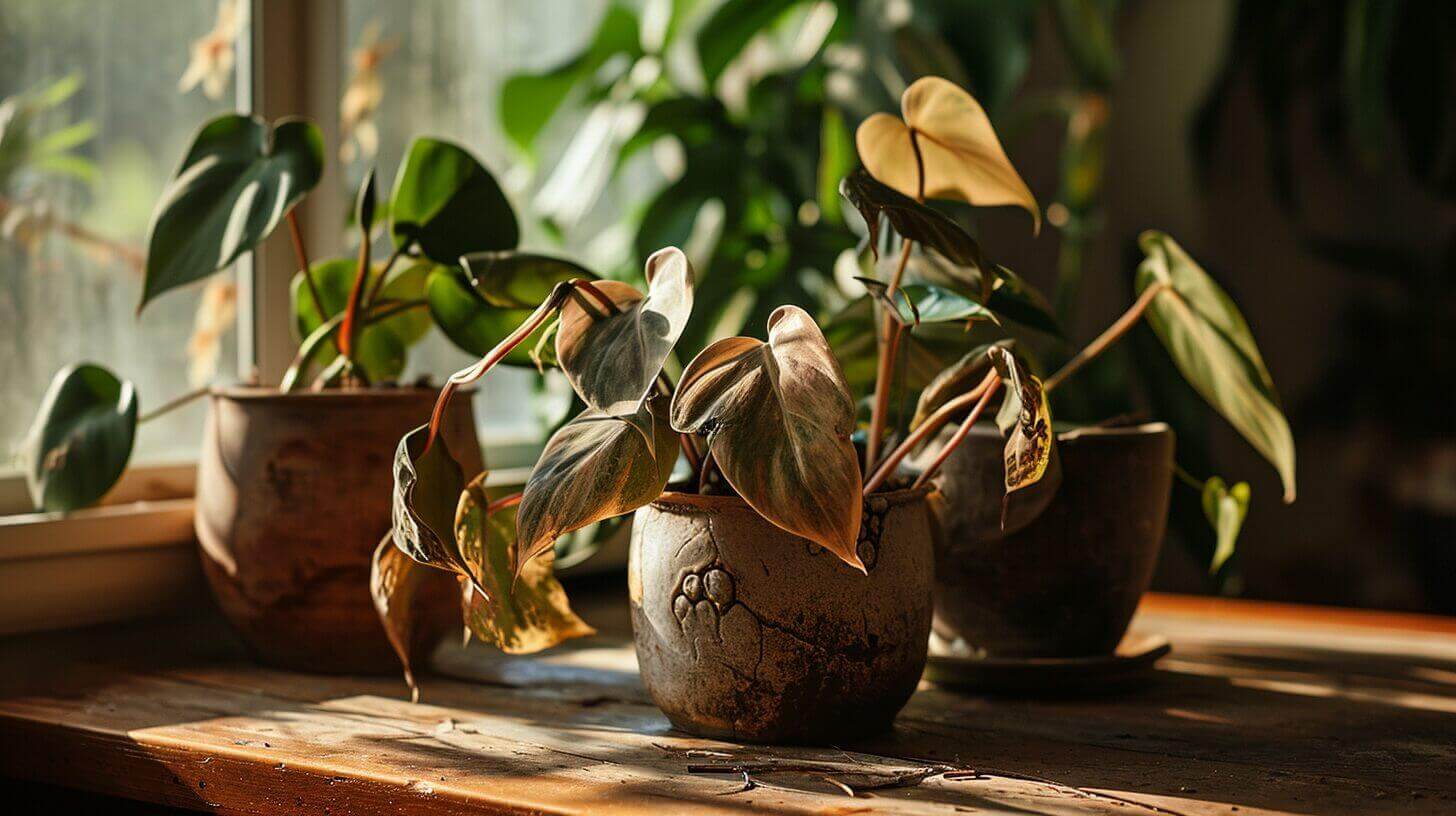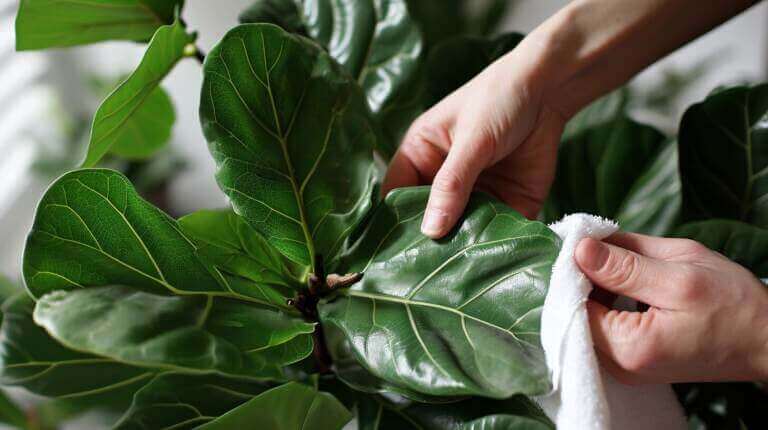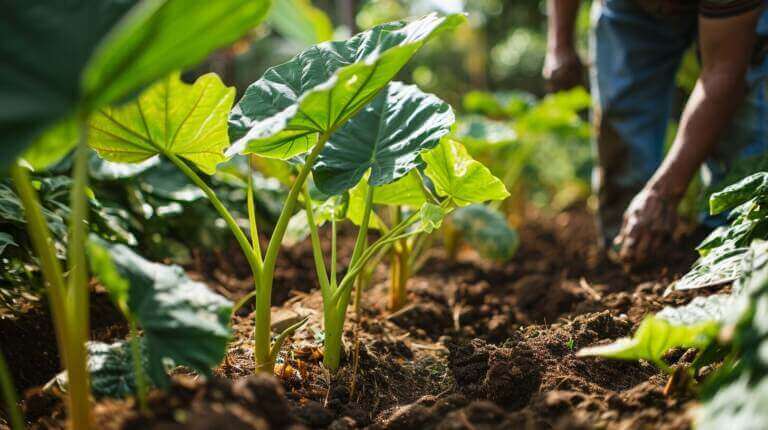Reasons Why Your Philodendron Leaves Turn Yellow and How To Fix It
As you gaze upon your once vibrant philodendron houseplant, its leaves now tinged with a disconcerting shade of yellow, a sense of concern washes over you.
Fear not, for this article aims to enlighten and equip you with the knowledge to restore your beloved plant’s health and beauty.
In the following, we will delve into the common causes of why philodendron leaves are turning yellow, from inadequate light to nutrient deficiencies, offering practical solutions to remedy the situation.
Prepare to embark on a journey of nurturing and revitalization for your cherished foliage.
Key Takeaways
- Excessive moisture in the soil can lead to root rot, resulting in yellowing leaves.
- Inadequate light can cause pale or yellowish leaves and stunted growth.
- Overwatering can contribute to yellowing leaves and root rot.
- Nutrient deficiencies and imbalanced fertilizer application can also cause yellowing leaves.
Common Causes of Yellowing Of Leaves on Philodendrons
One of the primary factors contributing to the yellowing of Philodendron leaves is the presence of excessive moisture in the soil. Philodendrons are tropical plants that thrive in well-draining soil. When the soil becomes waterlogged, it can lead to root rot, preventing the roots from absorbing nutrients properly. This lack of nutrient uptake can result in yellowing leaves.
To prevent yellowing leaves, it is essential to ensure that the soil is well-draining and not overwatered. Allow the top inch of soil to dry out between waterings, and make sure the pot has drainage holes.
Additionally, providing adequate sunlight and humidity levels can also help in caring for philodendrons and maintaining healthy green leaves.
Inadequate Light Causes of Philodendron Yellow Leaves
Inadequate light can significantly impact the color of philodendron leaves. When plants don’t receive enough light, they struggle to perform photosynthesis, resulting in yellowing leaves.
Here are some effects of low light on plant growth and strategies for providing adequate light to philodendrons:
- Stunted growth: Insufficient light slows down the plant’s metabolism and restricts its ability to produce energy, leading to stunted growth.
- Leggy appearance: In an attempt to reach for more light, philodendrons may develop long, thin stems with widely spaced leaves.
- Fading leaf color: Inadequate light causes chlorophyll levels to decrease, resulting in pale or yellowish leaves.
To ensure your philodendron receives enough light:
- Place it near a bright, east-facing window where it can receive indirect sunlight.
- Consider using artificial grow lights to supplement natural light.
- Rotate the plant regularly to ensure all sides receive equal light exposure.
Overwatering and the Effects on Philodendron Root Rot
Excessive watering can have detrimental effects on the health of philodendrons, including yellowing leaves and root rot.
Overwatering is a common mistake made by plant owners, often due to the misconception that plants need frequent watering. However, philodendrons are native to tropical rainforests and have adapted to survive in moist but well-drained environments.
The first sign of overwatering is yellowing leaves, which can be followed by wilting and drooping. To prevent overwatering, it is important to check the moisture level of the soil before watering. The top inch of the soil should be dry to the touch before watering again.
Additionally, using well-draining soil and pots with drainage holes can help prevent water from accumulating at the roots.
Proper watering practices are essential to maintain the health and vitality of your philodendron.
Yellow Leaves on Philodendron Due to Nutrient Deficiencies
A lack of essential nutrients, combined with improper absorption, can lead to yellowing leaves and overall discoloration in philodendron plants. Nutrient deficiencies can occur due to a variety of factors, including poor soil quality, imbalanced fertilizer application, or inadequate watering practices.
To address this issue, consider the following solutions:
- Identify the specific nutrient deficiency: Different nutrients play different roles in plant health. By identifying the specific nutrient lacking in your philodendron, you can provide targeted solutions.
- Improve soil fertility: Incorporating organic matter, such as compost or well-rotted manure, can help improve soil fertility and nutrient availability.
- Proper fertilization: Use a balanced fertilizer specifically formulated for indoor plants, following the recommended dosage and frequency. This will ensure your philodendron receives all the necessary nutrients for optimal growth.
Proper fertilization is of utmost importance in preventing nutrient deficiencies and maintaining the health of your philodendron. By addressing nutrient deficiencies and providing the necessary solutions, you can help restore the vibrant green color to your philodendron leaves and promote overall plant vitality.
Philodendron Has Yellow Leaves Cause By Pests and Diseases
When dealing with yellowing leaves on your philodendron, it is crucial to be able to identify and effectively treat any pests or diseases that may be causing the issue.
While yellowing leaves can be a natural leaf aging process, it can also be a result of environmental stress factors or the presence of pests and diseases.
Common pests that may affect philodendrons include spider mites, aphids, and mealybugs. These pests can cause discoloration, wilting, and distortion of the leaves.
Diseases such as root rot and leaf spot can also lead to yellowing leaves.
To treat pests, you can use insecticidal soap or neem oil. For diseases, it is important to improve drainage and avoid overwatering.
Removing affected leaves and maintaining proper care can help prevent further damage and promote healthy growth.
Frequently Asked Questions
Can Philodendron Drooping also Cause Yellowing of Leaves?
Philodendron drooping can indeed result in yellowing of leaves, as it may be an indicator of root issues or dehydration. Reviving drooping philodendron foliage involves assessing the plant’s watering schedule, ensuring proper drainage, and adjusting humidity levels if necessary. Providing proper care and addressing the underlying causes can help restore the plant’s health and prevent further leaf yellowing.
What Are Some Signs of Over-Fertilizing a Philodendron Plant and How Can It Be Corrected?
Over-fertilization of a philodendron plant can lead to certain indicators that are useful in recognizing this issue. Signs may include:
- Leaf wilting or burning
- Stunted growth
- Accumulation of fertilizer salts on the soil surface
To address over-fertilization, it is recommended to take the following steps:
- Flush the soil thoroughly with water to remove excess nutrients
- Adjust the fertilization schedule
- Use a diluted fertilizer solution
- Repot the plant in fresh soil
These actions can help correct the situation.
Are There Any Natural Remedies or Homemade Solutions That Can Help Prevent or Treat Yellowing Philodendron Leaves?
There are several natural remedies and homemade solutions that can help prevent or treat yellowing philodendron leaves. These solutions often involve adjusting watering practices, ensuring proper drainage, providing adequate sunlight, and using organic fertilizers.
Additionally, using a diluted solution of neem oil or a mixture of water and mild dish soap can help control pests that may cause leaf yellowing.
It is important to research and follow specific instructions for each remedy to ensure effectiveness and avoid any potential harm to the plant.
Why do philodendron leaves turn yellow?
The yellowing of leaves on philodendrons is often due to overwatering or underwatering. It’s important to water your philodendron properly to prevent this issue.
What causes the leaves on my philodendron to turn yellow?
Several factors can cause your philodendron’s leaves to turn yellow, including poor drainage, insufficient light, and nutrient deficiencies.
How can I fix yellow leaves on my philodendron?
To fix yellow leaves, adjust your watering schedule, ensure the plant is getting enough light, and consider repotting your philodendron if the problem persists.
What is root rot in philodendrons?
Root rot is a condition that can cause the leaves on philodendrons to turn yellow or brown. It’s usually caused by overwatering and poor drainage.
How does overwatering cause philodendron leaves to turn yellow?
Overwatering can lead to root rot, which in turn causes the plant’s leaves to turn yellow due to the lack of nutrients being absorbed.
Why is my philodendron turning yellow?
Your philodendron may be turning yellow due to environmental stress such as changes in temperature, light levels, or water quality.
How can I prevent my philodendron leaves from turning yellow?
Regularly check for signs of pests, ensure your plant is getting the right amount of light, and water it appropriately to prevent the leaves from turning yellow.
Why are there yellow spots on my philodendron leaves?
Yellow spots on your philodendron’s leaves may be a sign of a fungal infection or pest infestation.
How do I remove yellow leaves from my philodendron?
Yellow or brown leaves should be gently pruned off at the stem to promote new growth.
What causes brown spots on philodendron leaves?
Brown spots on your philodendron’s leaves could be a sign of a bacterial or fungal infection.







